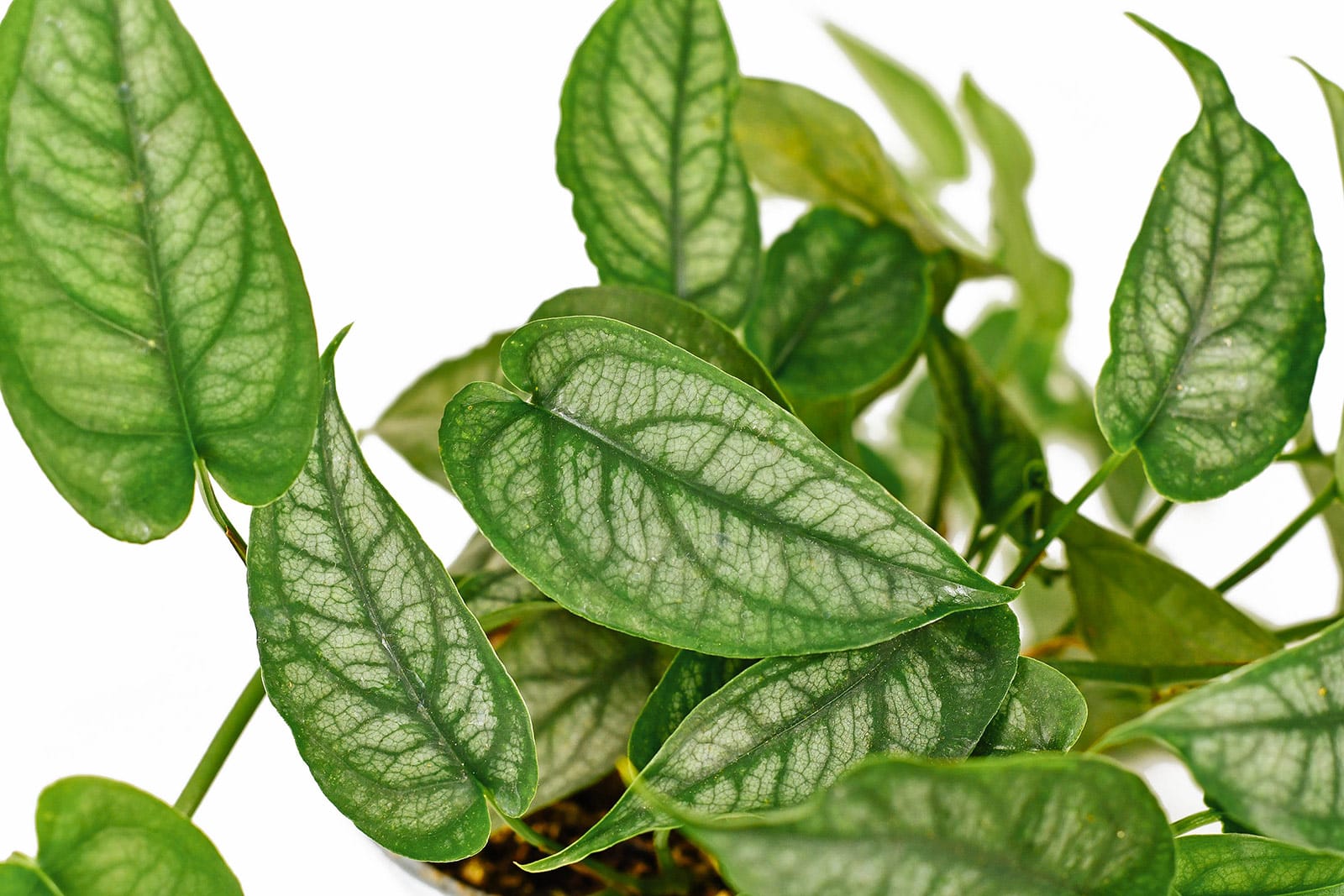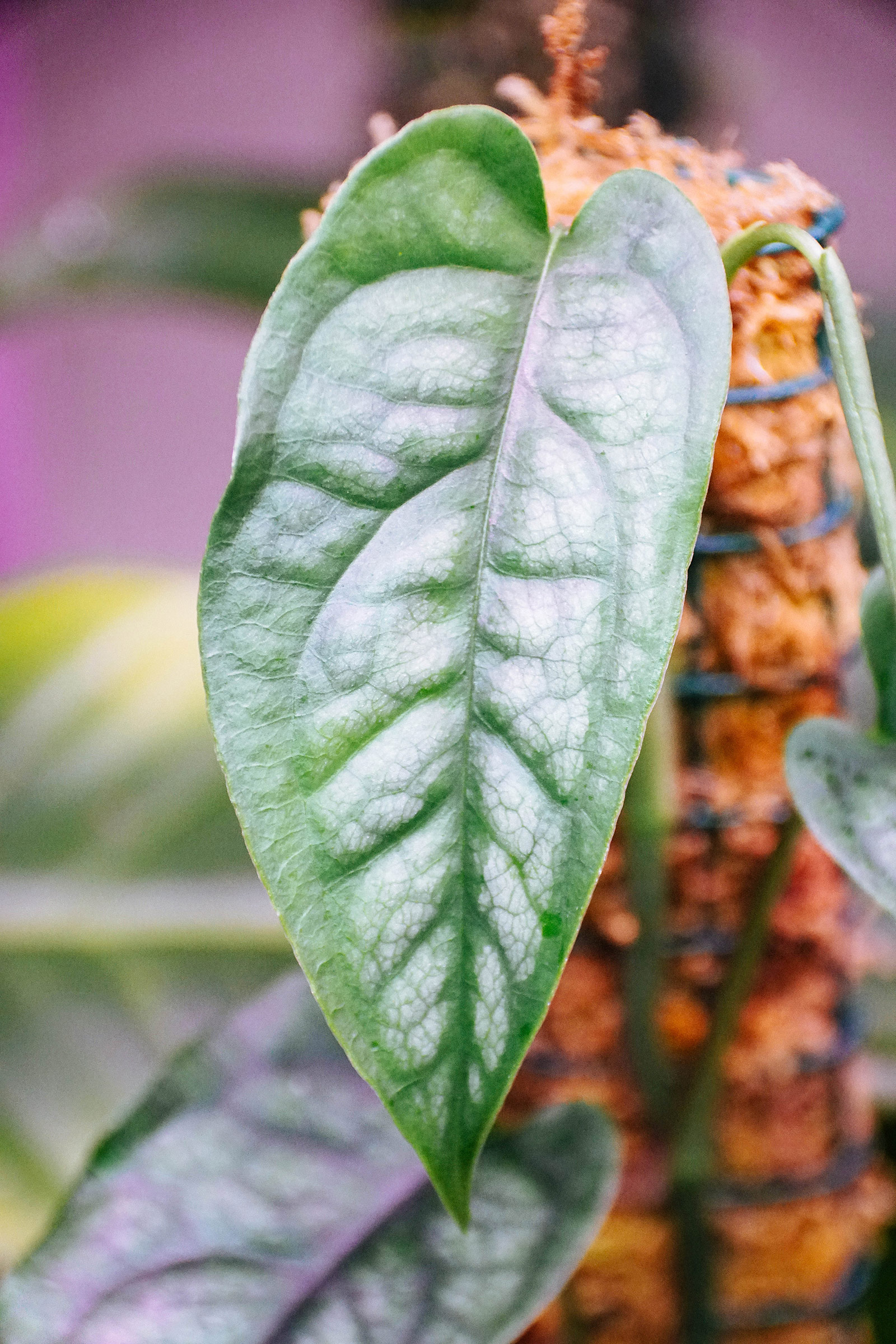Hey there houseplant lover! Did you know there’s more to the ultra-popular genus Monstera than the ubiquitous Monstera deliciosa and adansonii? Let me introduce you to Monstera siltepecana, a less common but lovely vining houseplant you can’t miss in your collection.
Keep reading for everything you need to know about Monstera siltepecana care and how to grow this Central American tropical indoors!
| Common name(s) | Silver Monstera |
| Scientific name | Monstera siltepecana |
| Family | Araceae |
| Height and spread | Up to 8 feet tall and 3 feet wide |
| Light | Bright indirect |
| Soil type | Aroid soil |
| Water | Keep lightly moist |
Disclosure: If you shop from my article or make a purchase through one of my links, I may receive commissions on some of the products I recommend.

About Monstera siltepecana
Natural habitat
This houseplant, which is also known as the silver Monstera, is native to the American continent. It can naturally be found in southern Mexico, as well as Central American countries like El Salvador, Honduras, Guatemala, and Belize. It gets its scientific name from the Mexican town of Siltepec in the southern Chiapas region.
In its native habitat, Monstera siltepecana grows as a vining epiphyte, creeping across forest floors when it’s small and graduating to a climbing growth pattern as an adult plant. (This creeping and climbing habit is similar to another tropical houseplant, Syngonium podophyllum.) It’s mainly found in cloud forests on mountain slopes, at elevations up to 8,200 feet.
Did you know? Monstera siltepecana was first “discovered” by Western scientist John Donnell Smith in Guatemala. Since then, it has gone by a few different Latin names until horticulturalists finally agreed on its current denomination.
Description
Monstera siltepecana is a vining houseplant appreciated for its nice foliage, which can range from almost solid green to decidedly silvery with dramatic dark green leaf veins. If allowed to climb, it can grow very tall and produce bigger and darker foliage as it matures.
Although the specimens of Monstera siltepecana that you’ll find in your local plant store usually don’t have holes in their leaves (also known as fenestration), the species actually absolutely has the ability to develop them. In fact, it’s very closely related to the popular fenestrated Monstera adansonii!
It’s just that the houseplant version of siltepecana is usually juvenile. It may need some time climbing on a moss pole and being exposed to proper lighting to develop its typical leaf holes.
Like other members of the family Araceae (the aroids), Monstera siltepecana can flower, although it usually doesn’t do so indoors. The flower is very typical for the genus, with a greenish-cream spathe and yellowish spadix. You’ll find the same type of (rather unimpressive) flowers on other aroids like Aglaonemas, Pothos, and Philodendrons.
Monstera siltepecana can actually fruit, too, although I can’t find information about whether the fruit is edible.
Monstera siltepecana varieties
The silver Monstera is a relatively new addition to the houseplant hobby, meaning nurseries haven’t had much time to play around with it yet. The only variety you’ll come across is Monstera siltepecana ‘El Salvador.’
Whereas a normal siltepecana’s leaves don’t always sport much in the way of silver coloration, ‘El Salvador’ has silvery leaves with striking dark leaf veins. This makes it a bit more of an eye-catcher than its regular counterpart, but unfortunately, it also comes with a price tag.
‘El Salvador’ cuttings tend to go for $50 or even more at the time of writing, compared to around $15 for normal Monstera siltepecana.
Where to buy Monstera siltepecana plants:
Monstera ‘Peru’ vs. siltepecana
If you’re trying to obtain a Monstera siltepecana, keep in mind that there are a few houseplants out there that look deceptively similar. One is an as-of-yet scientifically undescribed species that has become popular in the hobby and goes by Monstera ‘Peru’ (or Monstera karstenianum, or even Epipremnum pinnatum ‘Marble Planet’ if you’re in Europe).
To tell apart Monstera ‘Peru’ vs siltepecana, consider the following: ‘Peru’ has more rounded foliage and the leaf veins are more deeply grooved. Siltepecana usually has slightly silvery leaves (especially the ‘El Salvador’ form), while its cousins are of a deep emerald green.
There is no variegated version of siltepecana that I know of, unlike ‘Peru,’ which does sometimes pop up in a marbled form.
Other related aroids that are similar to Monstera siltepecana include Epipremnum pinnatum and Monstera standleyana.

Caring for Monstera siltepecana
Light and temperature
When it comes to its lighting needs, Monstera siltepecana is a typical aroid. It naturally occurs in tropical rainforests where much of the light is shaded out by taller trees, meaning it has evolved to make do with a little less.
Still, indoors you should give it a spot on a bright windowsill, preferably one that receives bright but indirect light. A little direct sun in the morning or late afternoon shouldn’t be an issue, but be sure to acclimate your plant properly to prevent its leaves from burning.
If your silver Monstera’s leaves begin growing further and further apart and the plant is looking sparse, it probably needs to be moved to a brighter location. If the leaves appear faded, you may have exposed it to too much sun.
As for temperature, it’s important to remember that this is definitely a tropical. It likes things at room temperature or higher and doesn’t appreciate the cold. Your plant is likely to stop growing if things drop below 60°F and may start to struggle below 50°F.
Water and humidity
Like most of our favorite houseplants, Monstera siltepecana prefers its soil lightly moist. During the warm and bright summer months when your plant is actively growing, you can let the first inch or two of the planting medium dry out before watering again.
Don’t overdo it! Root rot due to overwatering is a prime cause of death in houseplants. You’ll probably have to water around twice a week if your home is warm and dry.
During the cooler and darker winter period, most tropical houseplants go into a state of semi-hibernation. They mostly stop producing new foliage and will need less water as a result. You can let the soil dry out about halfway during this time. Just don’t let it go bone dry; your Monstera siltepecana’s bottom leaves will start yellowing if it gets too thirsty.
As for humidity, this species isn’t overly demanding, but it doesn’t appreciate dry air. Remember that in its natural cloud forest habitat, air moisture levels are at 90 percent or more pretty much year-round!
In your home, your humidity meter should read at least 50 percent at all times or your tropical houseplants can begin to suffer. If the percentage regularly falls below 40 percent, investing in a humidifier can make a big difference in how well your plants grow.
Soil and planting
Did you know that the right soil mixture can make a huge difference for your houseplants? Aroids like Monstera siltepecana are partly epiphytes, naturally climbing taller trees to reach higher light levels. They’re not used to their roots being stuffed in dense soil mixtures that retain a lot of water, instead preferring something light and airy.
Soil mixes for aroids can be found in some (online) plant stores, but they’re often pretty pricey. Luckily you can also easily mix your own. A few basic ingredients will yield a medium that will work well for many popular houseplants—not just for your Monstera—including Philodendron gloriosum, Anthurium clarinervium, and Alocasia x amazonica ‘Polly’.
You can try the following basic recipe:
- 1 part normal high-quality houseplant potting soil
- 1 part perlite
- 1 part fine orchid bark
Some houseplant enthusiasts also like to add some horticultural charcoal for even better drainage and to prevent impurities in the soil, but this is not a necessity. Just experiment a little!
As for the right planter, it doesn’t matter much as long as it has a drainage hole in the bottom. It should preferably also have space for a moss pole or other type of support, because these guys love to climb! If you let the leaves hang down, they won’t grow as large and will probably never develop their typical holes.
Recommended products for Monstera siltepecana care:
- Good Earth Organics Premium Potting Soil
- Perfect Plants Organic Perlite
- Better-Gro Orchid Bark
- Totem Monkey Extendable Coir Moss Poles
- Espoma Organic Horticultural Charcoal
Fertilizing
Aroids like this one don’t tend to be heavy feeders, but that doesn’t mean they don’t appreciate a little extra nutrient boost from time to time. During the active summer growing months, you can use a normal liquid houseplant fertilizer once or twice a month while watering.
Don’t fertilize your houseplants when they’re inactive in winter or if they aren’t doing well. The excess nutrients won’t be taken up and can actually damage the roots.
Recommended fertilizers for Monstera siltepecana:
- Houseplant Resource Center Liquid Fertilizer for Houseplants
- Instant Biologics Instant Plant Food (Fizzing Nutrient Tablets)
- Maxsea All-Purpose Seaweed Plant Food
Pruning
Your Monstera siltepecana won’t need much pruning, as you’ll probably want it to grow as large and wild as possible. The only maintenance it may need is the occasional removal of dead leaves, since it’s normal for houseplants to shed the foliage at the bottom of their stems when they feel they have lost their usefulness.
If the vines on your plant do get out of control and you’d like to give it a trim, have a look at the section below on propagation. It’s a waste to throw perfectly good clippings away when you can use them to grow a whole new plant!
Dividing or repotting
With some houseplants, once they outgrow their current planter, you can choose between repotting them or dividing them by removing some offshoots. This isn’t really the case for Monstera siltepecana, unless you happen to have multiple cuttings in the same planter. These plants tend to focus more on growing upwards, not on producing side shoots.
You’ll know it’s time to repot your silver Monstera when its roots begin poking out of the drainage holes in the bottom of the planter. The soil drying out more and more quickly is also a good indication it’s time to go up one pot size.
Don’t move your plant to a huge container all of a sudden; the soil can stay wet for too long in a pot that’s too large. This increases the risk of root rot.
Propagating Monstera siltepecana
Multiplying vining houseplants like this one is an absolute breeze. You can easily propagate your Monstera siltepecana by simply taking 2 1/2-inch cuttings from the ends of a vine. Include a few leaves and nodes (growth points) and you’re well on your way to creating brand new plants.
The cuttings can be rooted in water or soil. Water propagation allows you to see the rooting process in real-time, while soil propagation offers the advantage of not having to pot up the rooted cutting later. This can come in handy, since occasionally, cuttings don’t respond well to the move from water to terrestrial life.
Is Monstera siltepecana toxic to cats and dogs?
Although aroids like Monstera siltepecana usually aren’t outright toxic, it’s best to keep them away from your pets. All parts of the plant contain calcium oxalate crystals, which can cause irritation to the mouth and throat when ingested.
If your pet takes a bite, any discomfort can usually be resolved by offering plenty of water, but it’s obviously still best avoided!
Sources:
https://powo.science.kew.org/taxon/urn:lsid:ipni.org:names:163959-2
Madison, M. (1977). A revision of Monstera (Araceae). Contributions from the Gray Herbarium of Harvard University, (207), 3-100.















